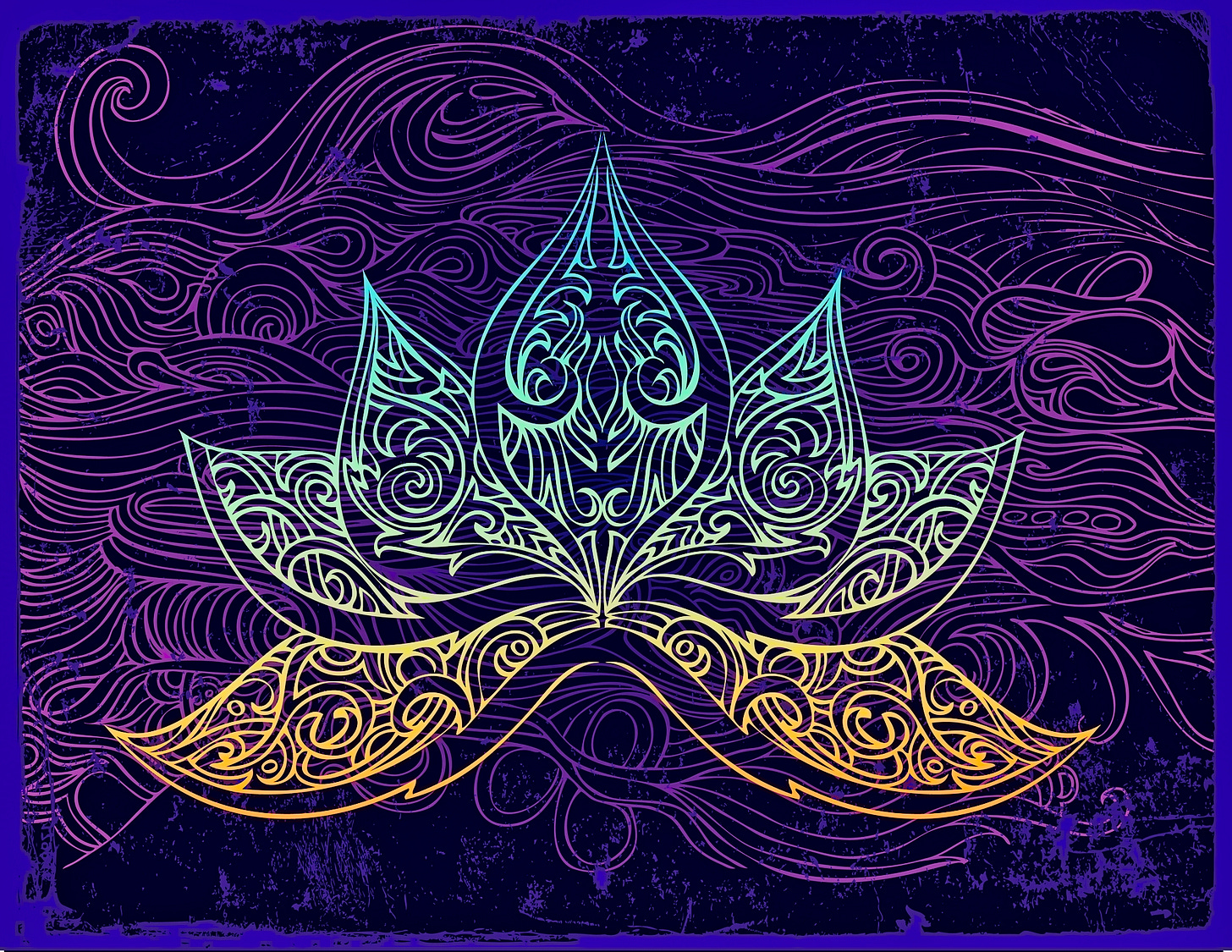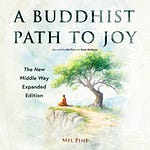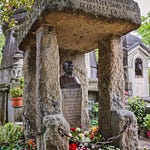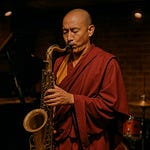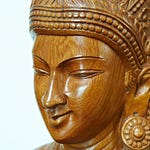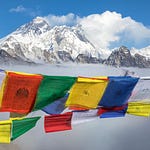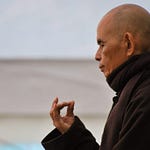After three decades of practicing Theravada (foundational) and Mahayana (second wave) Buddhism, I was still confused about one thing. As far as I could tell, every form of Buddhism teaches that all beings have the Buddha Nature within or at least the potential for enlightenment, but it always seemed distant—not within reach.
I certainly didn’t consider myself a Buddha, but my meditative experiences had convinced me that Buddhahood or some form of enlightenment was closer than I had been led to believe. It was within reach. During the second half of 2015, I expanded my spiritual horizons and spent much time listening to teachings from several traditions on YouTube. I grew interested in learning more about Lama Surya Das.
Although Lama Surya is five years younger than me, we grew up in similar cultural circumstances—two young men from urban Jewish homes (I from Philadelphia and Jeffrey Miller from Brooklyn) navigating the turbulent 1960s. He had more chutzpah than I did, so after the Kent State massacre, he left the United States with a couple hundred dollars in his pocket and found his way to the spiritual teachers of Southeast Asia. He returned West decades later to teach without losing his Brooklyn accent, as I have never lost my Philadelphia accent.
As I watched him on YouTube, deciding whether to attend a retreat he was to lead in the first week of January 2016, this exchange with an interviewer most impressed me. Paraphrasing from memory:
Interviewer: Do you consider yourself enlightened?
Lama Surya: [Pause]…Yes.
How enlightened?
Enlightened enough.
Enough for what?
Enough for where I am right now.
In that exchange, he confirmed that enlightenment is within reach, even for gruff-sounding former urban Jewish kids. I attended the retreat and, on January 8, 2016, took Refuge and Bodhisattva Vows with him. He gave me the dharma name Urgyen Jigme (Fearless Lotus).1
Lama Surya teaches in the Vajrayana (third wave) Buddhist tradition. That’s the school that’s almost synonymous now with Tibetan Buddhism. He uses primarily the Dzogchen approach with elements of Mahamudra woven in. Those are two slightly different styles of conveying to students the same view:
We all have a pure, innate, nondual, compassionate mind that is our Buddha Nature. We can find it in one lifetime and learn to rest within it.
After four or five years with Lama Surya, I needed more and began learning from Yongey Mingyur Rinpoche, his Tergar organization, and other Vajrayana teachers. Mingyur Rinpoche uses primarily the Mahamudra approach, with elements of Dzogchen woven in, so he was a great complement to Lama Surya.
A couple of days ago, on September 16, I was among the hundreds of students worldwide who completed Path of Liberation Level 4 with Mingyur Rinpoche via Zoom. He had conveyed the full Mahayana and Dzogchen teachings on nature of mind, which is the heart of Vajrayana Buddhism. It felt like a completion,2 even though my learning and meditation practice will never end.
All of my meditation experiences, the books and articles I’ve read, the dharma talks I’ve listened to from dozens of teachers, the retreats I’ve attended, and the spiritual friends I’ve made contributed to that sense of completion, but it was Mingyur’s program that got me there. Sadhi in Pali or ziji in Tibetan means confidence, trust, or faith. My work now involves developing the ziji that allows me to rest in my Buddha Nature.
As Lama Surya says, “If I can do it, anybody can.”
I write From the Pure Land to help those in any spiritual tradition along their path to relieve suffering. If Vajrayana Buddhism feels like a good fit for you, Mingyur Rinpoche and his worldwide Tergar network have a program far more complete than anything else available for Westerners (like me) who are unable or unwilling to spend years living in an Asian monastery.
For beginners to Vajrayana, Mingyur’s Joy of Living program is the place to start. If it still feels right, the Path of Liberation takes students into the nature of mind. It can all be done via Zoom except for Path of Liberation Level 2, which involves an empowerment that must be done in the physical presence of Mingyur or another qualified rinpoche. I received that empowerment on June 15, 2023, when Mingyur taught Levels 1 and 2 in a St. Paul, Minnesota, retreat.

So, what exactly is enlightenment, and have I reached it? Can you reach it in this lifetime? Basic dictionary definitions refer to attaining knowledge or spiritual insight, but in Buddhism, enlightenment is an experiential state, not merely intellectual. And there are stages of enlightenment.
Early Buddhism recognized four: stream-enterer, once-returner, non-returner, and arahant (conqueror). Later classification systems vary over fine points, but in Vajrayana Buddhism we sometimes refer to 10 stages, each called a Bhūmi (foundation or ground). A scripture known as the Daśabhūmika Sūtra lays them out this way:
1) The Ground of Joyfulness (pramuditā);
2) The Ground of Stainlessness (vimalā);
3) The Ground of Shining Light (prabhākarī);
4) The Ground of Blazing Brilliance (arciṣmati);
5) The Difficult-to-Conquer Ground (sudurjayā);
6) The Ground of Direct Presence (abhimukhī);
7) The Far-Reaching Ground (dūraṃgamā);
8) The Ground of Immovability (acalā);
9) The Ground of Excellent Intelligence (sādhumatī);
10) The Ground of the Dharma Cloud (dharma-megha).
In other words, there’s enlightenment, and there’s…Enlightenment. If fully enlightened beings—Buddhas—are walking around in human form, I haven’t met them. We’re all at some distance from Buddhahood. We have that innate Buddha Nature, and we use verbal teachings and nonverbal methods like meditation and contemplation to find, feel, and get closer to it. How will we know when we’ve found it? I’ll use a phrase of Mingyur Rinpoche’s. When we can rest in:
Awareness without object, love and compassion without reason, wisdom without concepts.
Am I enlightened?
Enlightened enough for where I am on my path. I invite you to join me wherever you are on yours.
From the Pure Land has subscribers in 28 U.S. States and nine countries. Consider:
Taking a five-minute survey to provide feedback and add your thoughts about From the Pure Land.
Sharing this post with a friend.
Becoming a subscriber if you are not one already. Free and paid subscribers receive the same content, but subscribing for $5 a month or $50 a year helps support the mission.
If you prefer to make a one-time donation of any amount to support Mel’s work, click this button.
In the 1990s, I had taken the precepts and received a dharma name in the Vietnamese Buddhist tradition.
A Path of Liberation Level 5 involves learning and practicing a devotion to White Tara. I regularly practice devotion to Buddha Amitabha, so I have not decided whether to take the Level 5 teachings.



